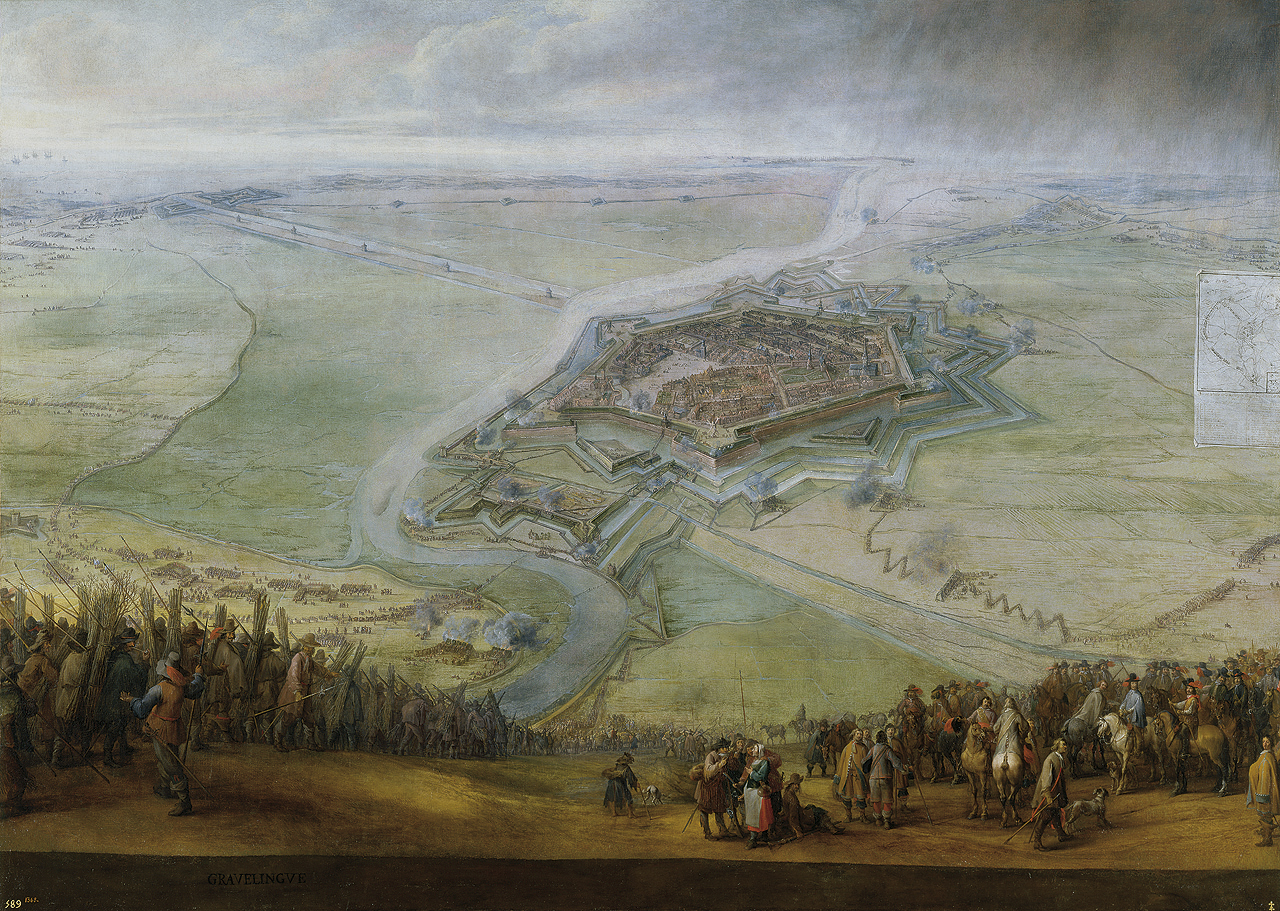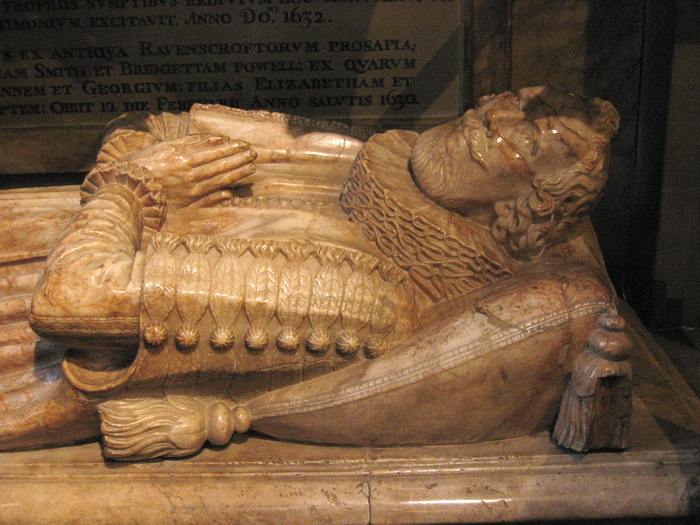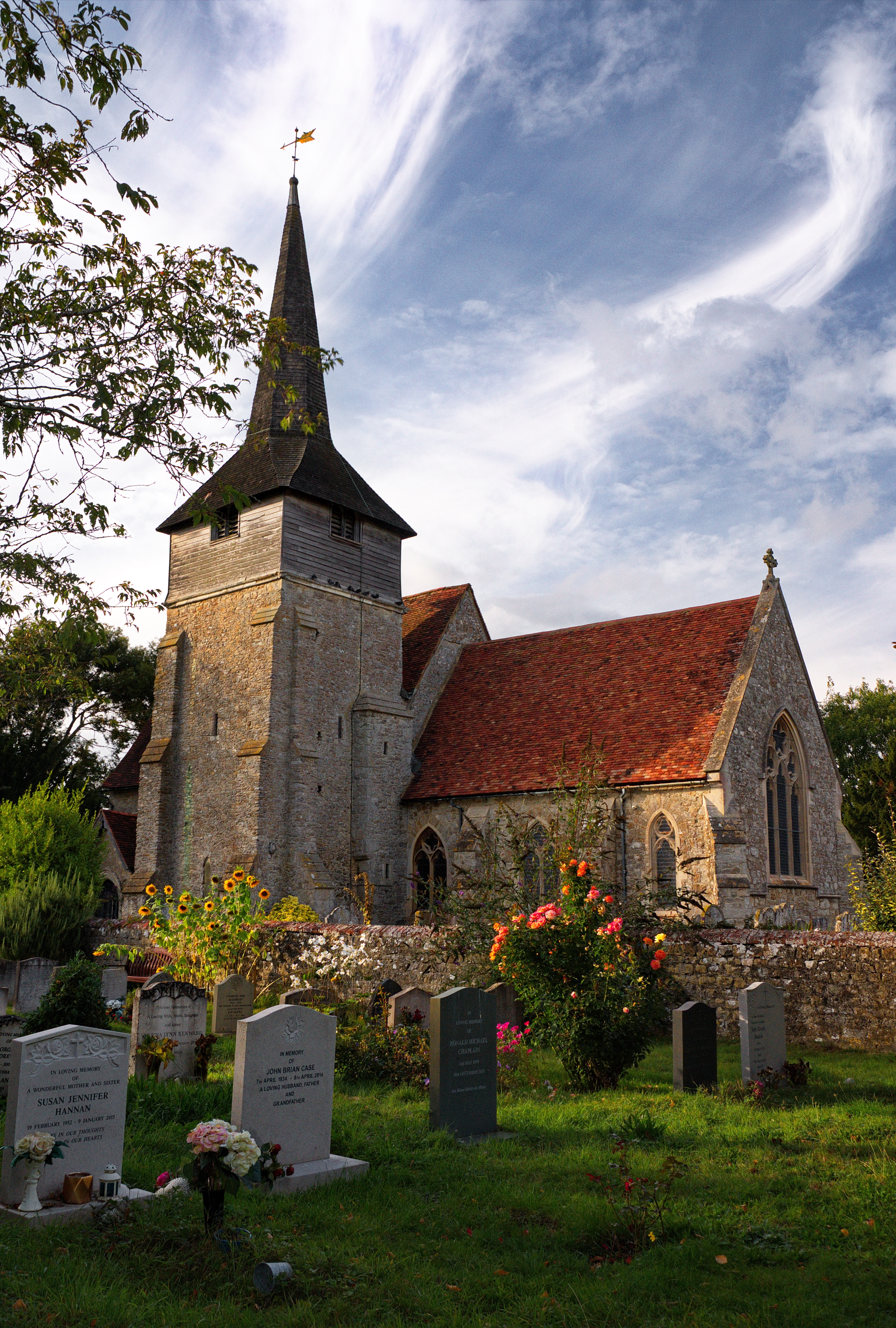|
Eleanor Palmer
Eleanor Palmer (died 1558) was an English philanthropist who established a charity to help the poor of Chipping Barnet and Kentish Town, now parts of London. Her charity still exists and owns and runs almshouses and residential homes for the elderly. Life She was the daughter of Edward Cheeseman (died 1510), a lawyer and administrator who became Cofferer and Keeper of the Wardrobe to King Henry VII, and his wife Joan Lawrence (died 1536). Her brother was Robert Cheeseman (1485-1547), a member of Parliament for Middlesex. Her first husband was Edward Taylor (died 1509) and her second husband was John Palmer (died 1542), younger son of Richard Palmer and his wife Margery Harthill. He held the manor of Rugmere, which is now the district of Chalk Farm, and she held lands in the manors of Tottenhall and Cantlowes. She is reported to have had eight children, of which those with John Palmer known to have married are: :Jerome (died 1565), who married Eleanor, daughter of William Page ... [...More Info...] [...Related Items...] OR: [Wikipedia] [Google] [Baidu] |
Eleanor Ambrose
Lady Eleanor Palmer ''née'' Ambrose (1718/20–1818) was a celebrated beauty and Catholic heiress. Her father, Michael, was well-educated but disbarred from several professions by his religion. He became a brewer and made his fortune. He resided at Mount Ambrose, Swords, County Dublin. Eleanor was described as "beautiful, witty, intellectual and a fevent patriot" who "managed to penetrate Dublin society, despite the fact that she was a Catholic. Indeed, she became a darling of the Viceregal Court, and during the Viceroyalty of Lord Chesterfield, she and her sister Clara were the prominent socialites of the Castle set. Chesterfield was attracted to her, and she soon accompanied him to all official ceremonies. Influenced by her opinions, Chesterfield is reported to have told George II that ''poverty not Popery was to be feared in Ireland'', he had found ''only one dangerous papist, the brightness of whose eyes and charms, and whose conversation were indeed dangerous'', and her name ... [...More Info...] [...Related Items...] OR: [Wikipedia] [Google] [Baidu] |
Shenley, Hertfordshire
Shenley is a village and civil parish in Hertfordshire, England, between Barnet and St Albans. The village is located 14 miles from Central London. History The history of Shenley stretches back a thousand years or more – it is mentioned in the Domesday Book of 1086. The name Shenley is based on the Anglo-Saxon Scenlai, Scenlei or Senlai, which means ‘fair or bright clearing or wood’. In the early Middle Ages, southwest Hertfordshire was heavily wooded, with isolated farmsteads or hamlets in forest clearings. Shenley would have been one of these settlements. By the 14th century, Shenley was considered to be a convenient parish for a country estate, being within reasonable reach of London. Its pure air, after the smoke and fog of the city made it a healthy place to live. The present village of Shenley apparently grew to accommodate the families of those providing a variety of services for the country estates of the gentry. Parish registers, dating back to 1657, include ser ... [...More Info...] [...Related Items...] OR: [Wikipedia] [Google] [Baidu] |
1558 Deaths
__NOTOC__ Year 1558 ( MDLVIII) was a common year starting on Saturday (link will display the full calendar) of the Julian calendar. Events January–June * January 7 – French troops, led by Francis, Duke of Guise, take Calais, the last continental possession of the Kingdom of England, in the Siege of Calais. * January 22 – The Livonian War begins. * February 2 – The University of Jena is founded in Thuringia, Germany. * February 5 – Arauco War: Pedro de Avendaño, with sixty men, captures Caupolicán (the Mapuche Gran Toqui), who is leading their first revolt against the Spanish Empire (near Antihuala), encamped with a small band of followers. * March 8 – The city of Pori ( sv, Björneborg) was founded by Duke John on the shores of the Gulf of Bothnia. * April 24 – Mary, Queen of Scots, marries Francis, Dauphin of France, at Notre Dame de Paris. July–December * July 13 – Battle of Gravelines: In France, Spanish fo ... [...More Info...] [...Related Items...] OR: [Wikipedia] [Google] [Baidu] |
Almshouses
An almshouse (also known as a bede-house, poorhouse, or hospital) was charitable housing provided to people in a particular community, especially during the medieval era. They were often targeted at the poor of a locality, at those from certain forms of previous employment, or their widows, and at elderly people who could no longer pay rent, and are generally maintained by a charity or the trustees of a bequest (alms are, in the Christian tradition, money or services donated to support the poor and indigent). Almshouses were originally formed as extensions of the church system and were later adapted by local officials and authorities. History Many almshouses are European Christian institutions though some are secular. Almshouses provide subsidised accommodation, often integrated with social care resources such as wardens. England Almshouses were established from the 10th century in Britain, to provide a place of residence for poor, old and distressed people. They were someti ... [...More Info...] [...Related Items...] OR: [Wikipedia] [Google] [Baidu] |
St John The Baptist Church, Chipping Barnet
St John the Baptist Church is the Church of England parish church of Chipping Barnet, Greater London. It forms part of the Chipping Barnet Team Ministry, comprising St Mark's, Barnet Vale, St Peter's, Arkley and St Stephen's, Bell's Hill. It crowns the ascent up Barnet Hill, and stands at the junction of Wood Street and High Street. It is one of the few Anglican churches in Greater London to belong to the Diocese of St Albans. History The evidence for a church comes from the Manor Court records which show that a chapel was in existence in 1272, built to serve the needs of the people of the village, the market and those who passed through. It is assumed that the building had been built around 1250. The first mention of a priest was in 1258, when it was noted that the 'Parson of Barnet' owned a copy of the works of the Latin poet, Ovid. At the time Chipping Barnet was chapel-of-ease to the much older parish church of St Mary the Virgin in East Barnet. It was only in 1866 that t ... [...More Info...] [...Related Items...] OR: [Wikipedia] [Google] [Baidu] |
St Albans
St Albans () is a cathedral city in Hertfordshire, England, east of Hemel Hempstead and west of Hatfield, Hertfordshire, Hatfield, north-west of London, south-west of Welwyn Garden City and south-east of Luton. St Albans was the first major town on the old Roman Britain, Roman road of Watling Street for travellers heading north and became the city of Verulamium. It is within the London commuter belt and the Greater London Built-up Area. Name St Albans takes its name from the first British saint, Saint Alban, Alban. The most elaborate version of his story, Bede's ''Ecclesiastical History of the English People'', relates that he lived in Verulamium, sometime during the 3rd or 4th century, when Christians were suffering persecution. Alban met a Christian priest fleeing from his persecutors and sheltered him in his house, where he became so impressed with the priest's piety that he converted to Christianity. When the authorities searched Alban's house, he put on the priest's cloa ... [...More Info...] [...Related Items...] OR: [Wikipedia] [Google] [Baidu] |
William Stanford (judge)
Sir William Stanford (1509 – 1558), also written Stamford or Staunford, was an English politician, judge and jurist. Origins Born on or by 22 August 1509 at Monken Hadley in Middlesex, he was the second son of William Stanford, a mercer in the City of London, and his wife Margaret Gedney. His father was a younger son of Robert Stanford, of Rowley Regis in Staffordshire. Career After some time at the University of Oxford, he then studied law, entering Gray's Inn in 1528 and being called to the bar in 1536. At Gray's Inn, he was chosen Reader in 1544 and 1551. By 1542, with a powerful friend at court in Sir Thomas Wriothesley and being owed money by Henry Stafford, he was elected MP for Stafford in the 1542 and 1545 Parliaments, and for Newcastle-under-Lyme in the 1547 Parliament. Though based in Middlesex, he developed Staffordshire links by buying the manors of Perry Barr and Handsworth. From 1542 to 1555, he was appointed to many royal commissions, some ranging over all En ... [...More Info...] [...Related Items...] OR: [Wikipedia] [Google] [Baidu] |
Kent
Kent is a county in South East England and one of the home counties. It borders Greater London to the north-west, Surrey to the west and East Sussex to the south-west, and Essex to the north across the estuary of the River Thames; it faces the French department of Pas-de-Calais across the Strait of Dover. The county town is Maidstone. It is the fifth most populous county in England, the most populous non-Metropolitan county and the most populous of the home counties. Kent was one of the first British territories to be settled by Germanic tribes, most notably the Jutes, following the withdrawal of the Romans. Canterbury Cathedral in Kent, the oldest cathedral in England, has been the seat of the Archbishops of Canterbury since the conversion of England to Christianity that began in the 6th century with Saint Augustine. Rochester Cathedral in Medway is England's second-oldest cathedral. Located between London and the Strait of Dover, which separates England from mainla ... [...More Info...] [...Related Items...] OR: [Wikipedia] [Google] [Baidu] |
Otham
Otham is a village and civil parish in the Borough of Maidstone, Maidstone district of Kent, England. The population of the civil parish at the 2011 census was 523, with 204 dwellings. Buildings The village itself has been in existence since before the time of the Domesday Book. The village was given by William the Conqueror to his half-brother Odo of Bayeux, Odo, bishop of Baieux, although the lands were later handed to the crown. Under Henry III of England, Henry III, the land was held by knight Peter de Otham, with the land changing hands several more times throughout time. One of the village's oldest buildings, the 12th-century parish church of St Nicholas's Church, Otham, St Nicholas, is a Grade I listed building. The vicar is Reverend Steven Hughes MBE. Otham also has a number listed mediaeval houses including Otham Manor (Grade I), Synyards (Grade I) and Stoneacre, Kent, Stoneacre (Grade II*). Stoneacre itself is a small National Trust for Places of Historic Interest or ... [...More Info...] [...Related Items...] OR: [Wikipedia] [Google] [Baidu] |
Edmund Colles
Edmund Colles (1528–1606) was an English landowner, administrator and legislator from Worcestershire who, although sympathetic to Catholicism, held public office throughout the reign of Queen Elizabeth I. Origins The eldest son of William Colles (1495–1558) and his second wife Margaret Hitch (1495–1572), he received a legal education in London at the Inner Temple, being admitted a member in 1553. The Colles family had had minor landholdings in Worcestershire for generations, originally in the village of Suckley, and his father held the lease of the manor, advowson and demesne lands of the village of Leigh which before the Dissolution of the Monasteries had belonged to Pershore Abbey. Landholdings In 1558 he inherited his father's holdings, to which he started adding, in 1564 gaining Colles Place which he claimed had belonged to his ancestors. In 1583 he settled the tenure of the manor of Leigh on his eldest son William on the occasion of his marriage to Mary Palmer (gra ... [...More Info...] [...Related Items...] OR: [Wikipedia] [Google] [Baidu] |
Eleanor Palmer Almshouses, Wood Street, Chipping Barnet 07
Eleanor () is a feminine given name, originally from an Old French adaptation of the Old Provençal name ''Aliénor''. It is the name of a number of women of royalty and nobility in western Europe during the High Middle Ages. The name was introduced to England by Eleanor of Aquitaine, who came to marry King Henry II. It was also borne by Eleanor of Provence, who became Queen consort of England as the wife of King Henry III, and Eleanor of Castile, wife of Edward I. The name was popular in the United States in the 1910s and 1920s, peaking at rank 25 in 1920. It declined below 600 by the 1970s, again rose to rank 32 in the 2010s. Eleanor Roosevelt, the longest-serving first lady of the US was probably the most famous bearer of the name in contemporary history. Common hypocorisms include Elle, Ella, Ellie, Elly, Leonor, Leonora, Leonore, Nella, Nellie, Nelly, and Nora. Origin The name derives from the Provençal name Aliénor, which became Eléonore in ''Langue d'oïl'', ... [...More Info...] [...Related Items...] OR: [Wikipedia] [Google] [Baidu] |
William Paget, 1st Baron Paget
William Paget, 1st Baron Paget of Beaudesert (15069 June 1563), was an English statesman and accountant who held prominent positions in the service of Henry VIII, Edward VI and Mary I. Early life He was the son of John Pachett or Paget, one of the serjeants-at-mace of the city of London. He was born in Staffordshire in 1506, and was educated at St Paul's School when William Lily was its headmaster, and at Trinity Hall, Cambridge, proceeding afterwards to the University of Paris. At St Paul's, he befriended the future antiquary John Leland and later acted as one of his benefactors.Carley, "Leland, John (''c''.1503–1552)" Political career He served as Member of Parliament for Lichfield in 1529 and for Middlesex in 1545. Probably through the influence of Stephen Gardiner, who had early befriended Paget, he was employed by King Henry VIII in several important diplomatic missions; in 1532 he was appointed Clerk of the Signet and soon afterwards of the privy council. He beca ... [...More Info...] [...Related Items...] OR: [Wikipedia] [Google] [Baidu] |




